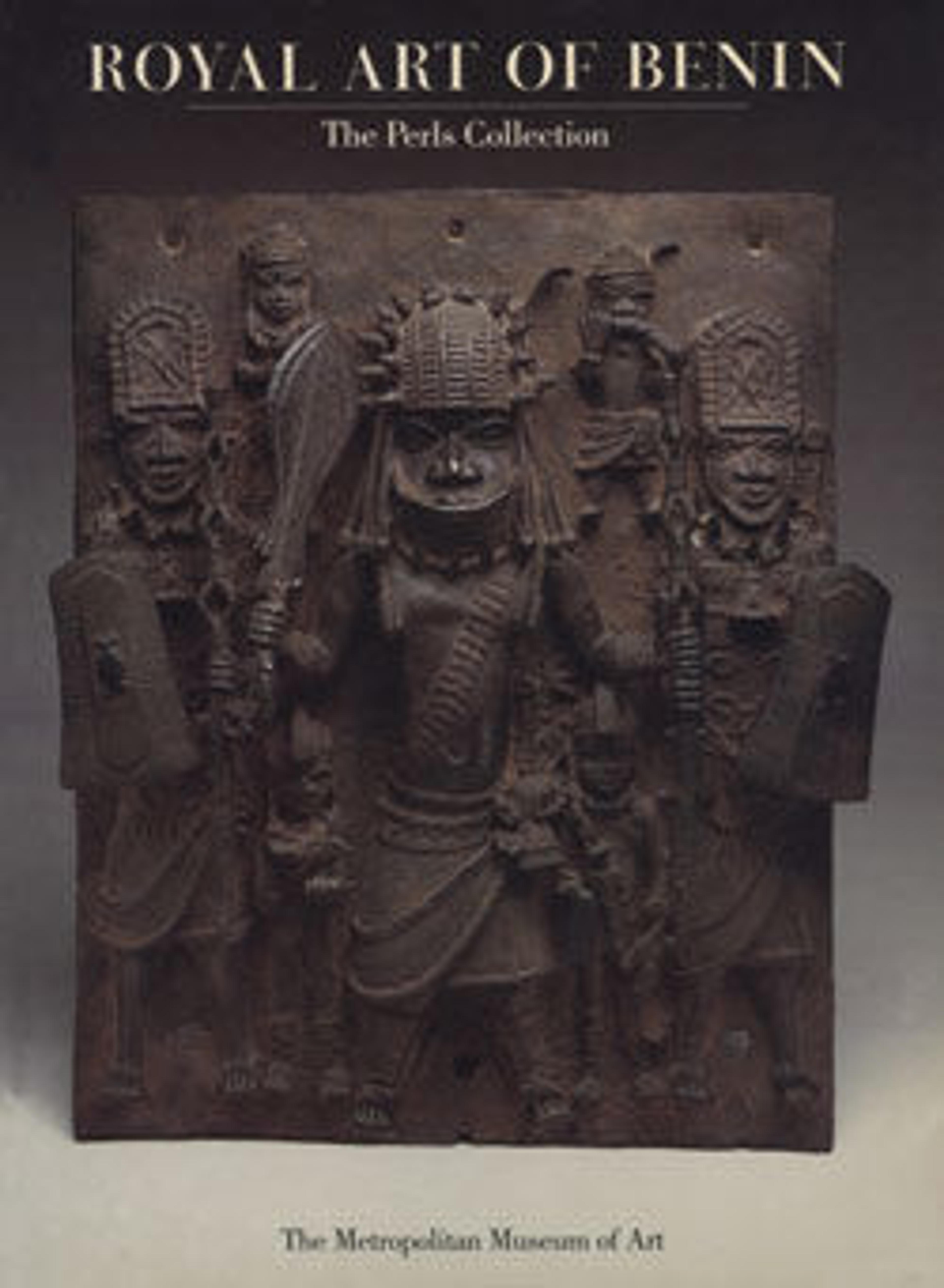Bell: Horse Head
A broad range of ethnic populations existing from the lower Niger Delta to the lagoon area east of Lagos manufactured conical brass bells with flared lips and human or animal faces. They were employed as markers of rank, prestige, and spiritual authority. Often worn on the body as part of a costume, they were sometimes carried by attendants who rang them to bring attention to the important personages they served.
This bell portrays the facial features of a horse. Two leaflike ears rise vertically from a striated forehead. The slanting eyes are separated by a smooth, circular medallion and a braided band running the length of the snout, which ends in flaring nostrils. An oblong loop represents the mouth. Lengths of fringe connected by rings to a strap across the muzzle suggest a harness. The bell is surmounted by a straplike handle embellished with a series of flattened spirals.
Images of horses were incorporated into a wide variety of prestige arts from this area. Horses were imported from the north at great expense and were the prerogative of only the wealthiest and most powerful individuals. Some kingdoms with large, standing militaries used horses for cavalry units that were devastatingly effective in warfare. As such, horses were fitting symbols of worldly success and military supremacy.
This bell portrays the facial features of a horse. Two leaflike ears rise vertically from a striated forehead. The slanting eyes are separated by a smooth, circular medallion and a braided band running the length of the snout, which ends in flaring nostrils. An oblong loop represents the mouth. Lengths of fringe connected by rings to a strap across the muzzle suggest a harness. The bell is surmounted by a straplike handle embellished with a series of flattened spirals.
Images of horses were incorporated into a wide variety of prestige arts from this area. Horses were imported from the north at great expense and were the prerogative of only the wealthiest and most powerful individuals. Some kingdoms with large, standing militaries used horses for cavalry units that were devastatingly effective in warfare. As such, horses were fitting symbols of worldly success and military supremacy.
Artwork Details
- Title: Bell: Horse Head
- Date: 19th–20th century
- Geography: Nigeria, Lower Niger River region
- Culture: Lower Niger Bronze Industry
- Medium: Brass, iron
- Dimensions: H x Diam.: 5 1/8 x 3 5/8 in. (13 x 9.2 cm)
- Classification: Metal-Musical Instruments
- Credit Line: Gift of Mr. and Mrs. Klaus G. Perls, 1991
- Object Number: 1991.17.140
- Curatorial Department: The Michael C. Rockefeller Wing
More Artwork
Research Resources
The Met provides unparalleled resources for research and welcomes an international community of students and scholars. The Met's Open Access API is where creators and researchers can connect to the The Met collection. Open Access data and public domain images are available for unrestricted commercial and noncommercial use without permission or fee.
To request images under copyright and other restrictions, please use this Image Request form.
Feedback
We continue to research and examine historical and cultural context for objects in The Met collection. If you have comments or questions about this object record, please contact us using the form below. The Museum looks forward to receiving your comments.
